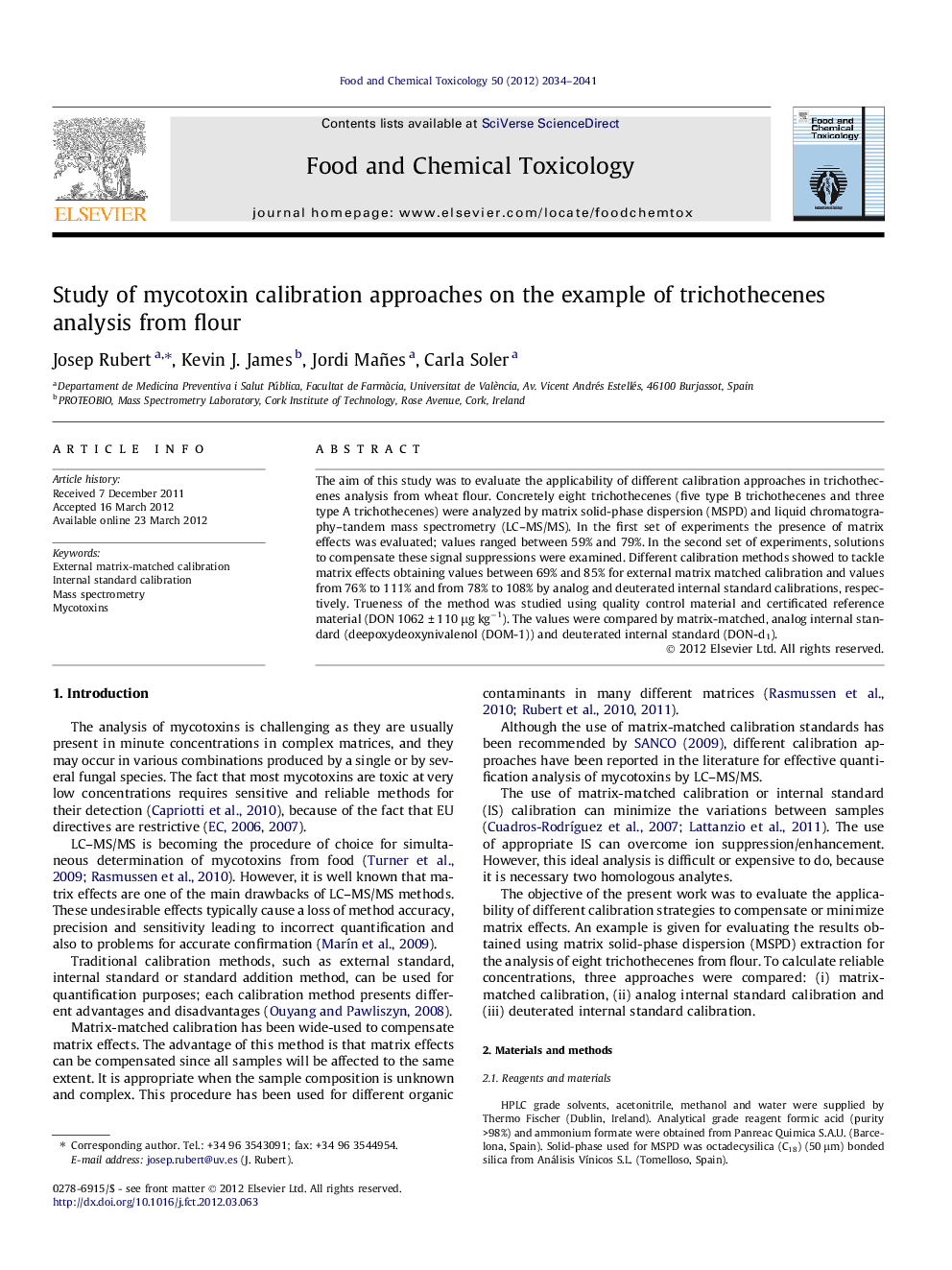| Article ID | Journal | Published Year | Pages | File Type |
|---|---|---|---|---|
| 5852868 | Food and Chemical Toxicology | 2012 | 8 Pages |
The aim of this study was to evaluate the applicability of different calibration approaches in trichothecenes analysis from wheat flour. Concretely eight trichothecenes (five type B trichothecenes and three type A trichothecenes) were analyzed by matrix solid-phase dispersion (MSPD) and liquid chromatography-tandem mass spectrometry (LC-MS/MS). In the first set of experiments the presence of matrix effects was evaluated; values ranged between 59% and 79%. In the second set of experiments, solutions to compensate these signal suppressions were examined. Different calibration methods showed to tackle matrix effects obtaining values between 69% and 85% for external matrix matched calibration and values from 76% to 111% and from 78% to 108% by analog and deuterated internal standard calibrations, respectively. Trueness of the method was studied using quality control material and certificated reference material (DON 1062 ± 110 μg kgâ1). The values were compared by matrix-matched, analog internal standard (deepoxydeoxynivalenol (DOM-1)) and deuterated internal standard (DON-d1).
⺠First comparison between external and internal addition calibration for trichothecenes analysis. ⺠Analogs and deutered internal standards were successful for trichothecenes analysis in wheat flour. ⺠Matrix-matched calibration demonstrated to be useful for trichothecenes analysis in wheat flour. ⺠The trueness of the method was demonstrated by recoveries, quality control samples and certified reference material. ⺠Since it is not legislated, the analyst can decide the calibration method according to its possibilities.
